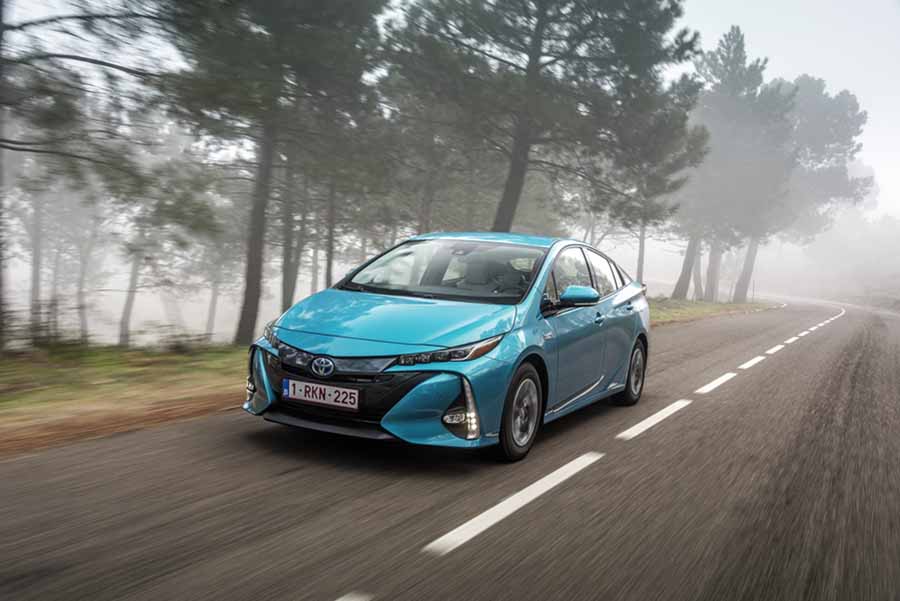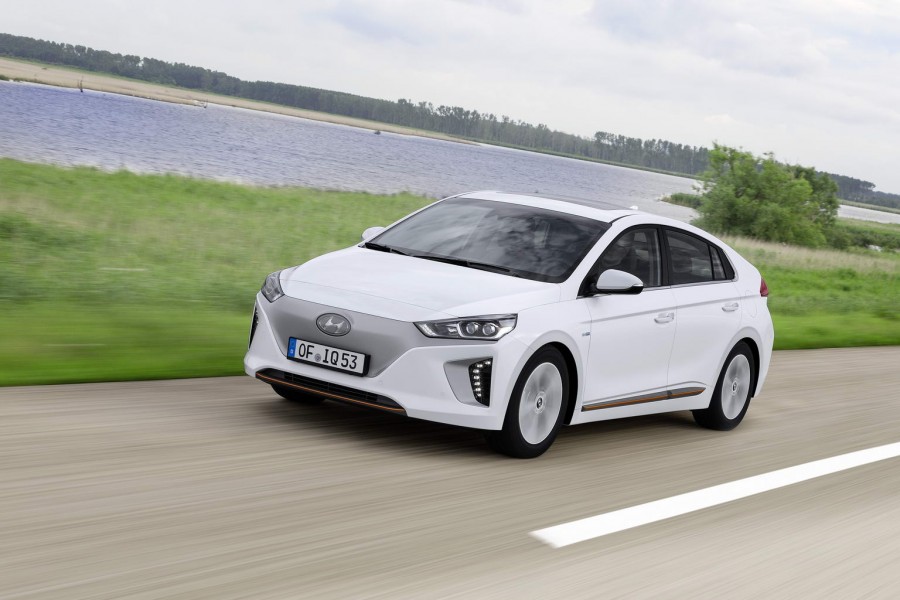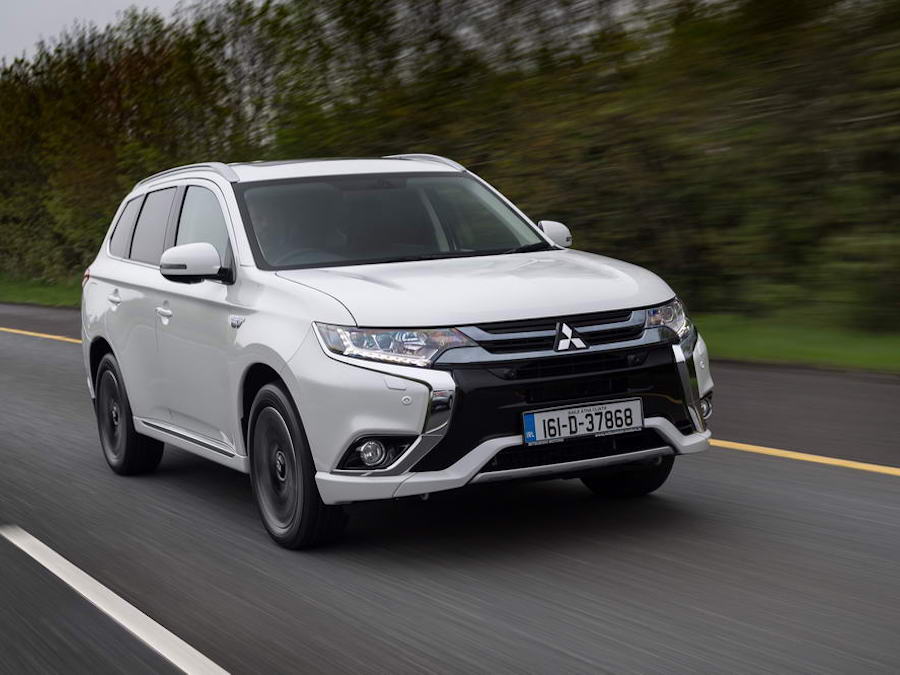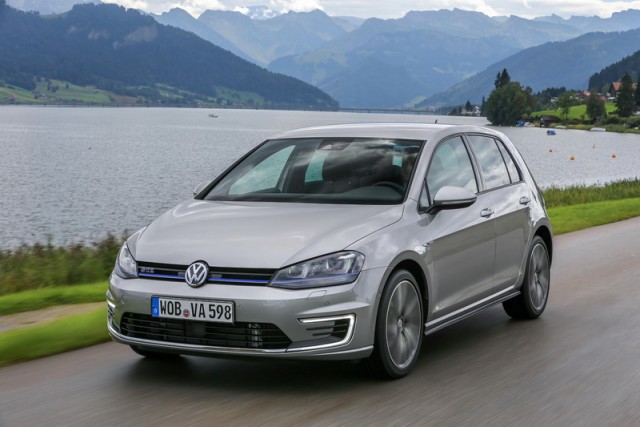Toyota puts a bigger battery into the Prius hybrid and adds plug-in functionality to create a longer-distance EV than the regular car. The resulting Prius Plug-in Hybrid is therefore a tempting proposition for families who won't want a diesel, but despite the addition of clever solar panel recharging on the roof and occupant-specific air conditioning, choosing a Prius Plug-in isn't a no-brainer, thanks to a few compromises that hold it back from greatness. Its success is likely to depend on its pricing.
In the metal
Even to a casual observer, it's clear there's something different about the new Prius Plug-in when compared to the normal parallel hybrid car. That's because Toyota - unlike other companies, who barely differentiate their PHEVs from combustion-powered or even other hybrid models, save for some colour-specific fillets of trim - has actually restyled the front and rear ends. It has sleeker 'four-cube' headlights and rear clusters that are arranged in a horizontal fashion, and we'd actually say that it makes the Prius a little more attractive than the admittedly daring, but rather divisive standard model.
Nevertheless, it's not perfect, as the rear wheels always look tiny no matter what angle you view them from, due to the large expanse of metal in the three-quarter panel above. However, we will say the current generation Prius should be commended for not being bland, preferring instead some stylistic distinctiveness, and so we approve of the looks of the Prius Plug-in, which is also aerodynamically optimised with an impressively low coefficient of drag of just 0.25. The additional charging flap, by the way, is located on the offside rear panel.
Inside is largely the same as the Prius Hybrid, so there's the expansive 'centre pod' instrument array on top of the dash, the stubby little drive lever in the lower console and a general feeling of quality mixed with some ergonomic correctness, save for the utterly daft location of the heated seat buttons (they're down and underneath the gear lever surround on another upright section of the console). One word of warning: the larger battery pack required for the Plug-in is located under the boot, which is noticeable when you lift the hatch - cargo space is reduced by 141 litres thanks to a raised floor.
Talking of the tech, the lithium-ion battery in the rear of the Prius Plug-in has doubled in capacity from 4.4- to 8.8kWh. That means the car can ostensibly go 48km on a charge, twice the distance the old plug-in model could go, and it has best fuel returns of 282mpg (1.0 litre/100km) with emissions of just 22g/km CO2. The big talking point is the switch to the Dual Motor Drive System (DMDS), meaning that the one electric unit in the Prius that is elsewhere used only for hybrid system generator purposes is now employed as a drive motor as well (like the second e-motor at the back of the car). This necessitates a one-way gear in the transaxle, but it does lead to better EV driving power and faster acceleration, with the EV mode of the Prius Plug-in now allowing for a top speed of 135km/h, where previously it was just 85km/h.
Gas-injection heat pump air conditioning is another innovation, which will heat the cabin without starting the engine (even at temperatures down to -10 degrees C), and it can turn off vents inside the car automatically, according to how many people it detects sitting in the seats. A battery warming system brings the cells up to working temperature when it's as chilly as -20 degrees C outside, thus negating the impact of cold weather on the EV range, and the pack's increase in power to 3.3kW means it can be charged quicker, too - 65 per cent juice can be dumped into the lithium-ion unit in just two hours on a rapid charger, or three hours ten minutes with a household plug socket.
And if all that's not enough for you, there's the option to fit a solar panel on the roof that can charge the main hybrid battery even when the car is parked, or extend the range slightly while it is driving along. It is claimed that, despite our fabled soggy weather conditions in Ireland, we could see up to five kilometres of additional range daily as a result of this solar roof, or 644km in a year in typical city traffic conditions. Impressive stuff.
Driving it
Despite the fact that the Toyota Next Generation Architecture (TNGA) has made the Prius MkIV much better to drive than any of its predecessors, it's still not what you'd called exciting. And all the fancy technology we've just outlined bumps up the kerb weight of this newcomer. The Plug-in is considerably porkier than the Prius Hybrid, to the tune of 150kg, and that really shows if you ask the plug-in model to make sudden, rapid direction changes. The body lurches unconvincingly after the chassis, leading to a disconcerting sensation of uncontrolled lean that makes throwing the Prius Plug-in around like a hatchback an exercise in futility. Sure, it has decent enough steering and there's actually plenty of front-end grip, but there's no way we could call the car an engaging machine.
What it is, of course, is exceptionally refined, in order to satisfy the driving styles of the likely primary users. Toyota says it has worked at making the Plug-in even quieter than a Prius, by fitting bonnet side seals to reduce engine noise, urethane wing separators to isolate the cabin from the combustion engine, rear-wheel well silencers to negate tyre roar from the back axle and also acoustic glass in the front doors. These measures, plus sound-deadening under the floor and around the passenger compartment, all make for serene, but not silent motorway cruising. There's still a little too much chatter from the tyres at speed and (as usual) the unpleasant, strained cries of the CVT if you ask for lots of power, but in general the ride quality is excellent and the refinement levels are high. It's also good in town, where the DMDS does make for peppier EV city acceleration than found on its less potent stablemates.
And the fuel economy? Is it as stratospheric as Toyota quotes? Well... no. But it's still pretty good. On a long test route that involved crawling around the congested streets of Barcelona before heading out onto a lengthy 120km/h motorway stint, the Plug-in returned 3.6 litres/100km - a decent 78.5mpg. During that trip, the car wasn't being driven in a careful, hypermiling manner, so later we tried again and - despite a depleted battery that was at 18 per cent - it managed to turn in 3.3 litres/100km (85.6mpg) on a hilly route. So, regular use of the electric charging facilities should see owners surpassing 2.8 litres/100km (100mpg) easily on a daily basis. It also conserved its battery power well in full EV mode while scooting about the city, so the 48km zero-emissions range claim seems eminently believable.
What you get for your money
The Prius Plug-in is due to arrive on the Irish market in June this year, with prices expected to start from around €37,000. According to Toyota Ireland, the majority of its regular Prius sales are made up for the higher Luxury grade, which costs €33,000. It expects that many existing Prius customers will upgrade to the Plug-in model in time. Toyota will offer three specification grades that, although not officially confirmed yet, will reflect the two already seen on the Prius, plus one additional range-topping version that will include the solar roof panel. This model is likely to cost closer to €42,000. All Prius Plug-In Hybrid models benefit from both the €2,500 VRT rebate and €5,000 SEAI grant, and these are reflected in the prices quoted here.
Summary
Quietly proficient yet not hugely entertaining: was the Toyota Prius Plug-in ever going to be anything else? Probably not, but the 'regular' Prius MkIV has already shown the capabilities of the platform in terms of interesting dynamics and the C-HR crossover has built on that, so we were a little disappointed with the stodginess displayed by the heavier Plug-in Prius. Despite this let-down, the interesting technology and the reality of vastly improved EV range do make the latest Toyota a strong PHEV contender in the mid-sized hatchback marketplace. Key to its success here is going to be how competitive the Irish pricing structure is once it is announced nearer the launch; get it just right, and Toyota Ireland could be onto a winner.




























